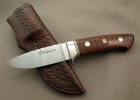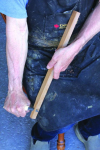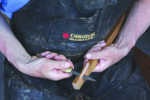It seems like I am getting a "Don't do that vibe"

. I was wondering the best way a knife maker can make an ergonomic handle for the customer. From what I am understanding from these replies, I should just make a lot of handles and use classic handle profiles and that will be good for the customer. I will say that I really don't want to reinvent the wheel. I just wonder if biomedical handle ideas could add to the comfort and ergonomics of a knife handle. I also realize that I could be in for a let down after I implement these shining scientific ideas and that it might not be any better than a classic shape XD. I was wanting to remove some of the guess work when I make a handle for a buyer.





